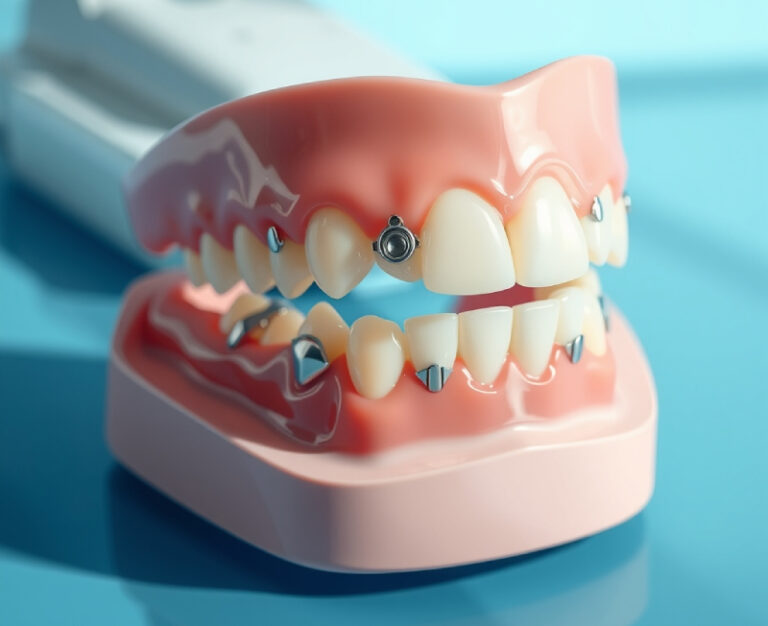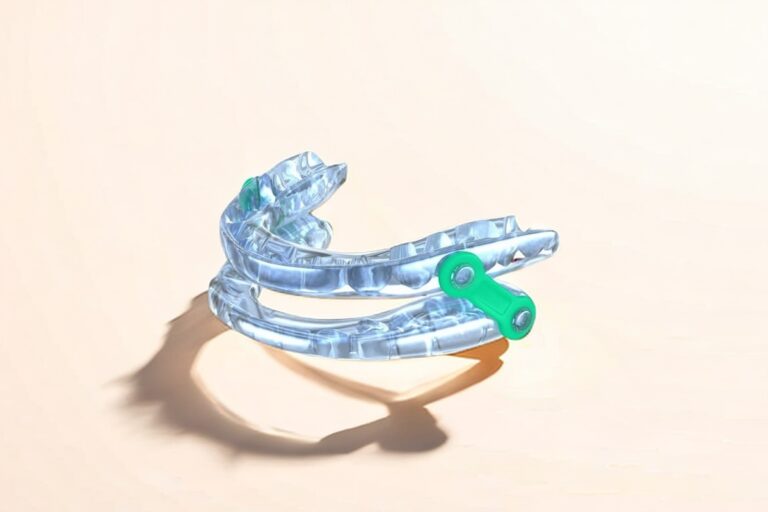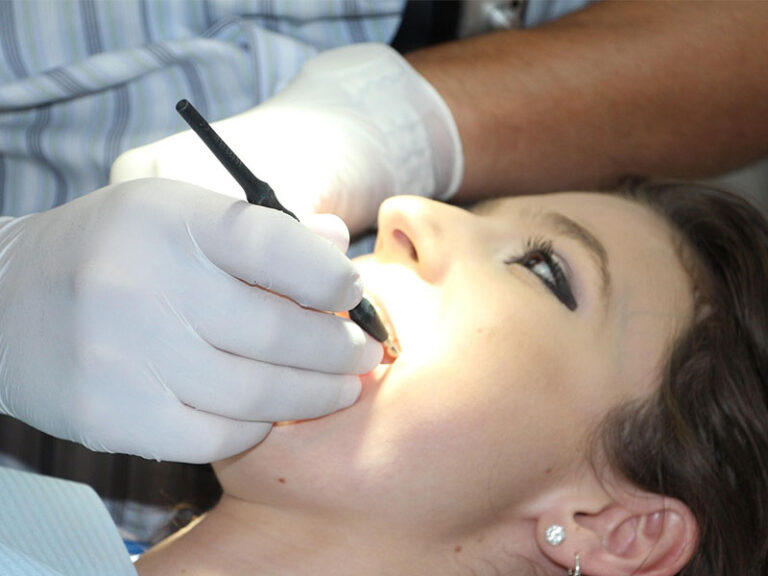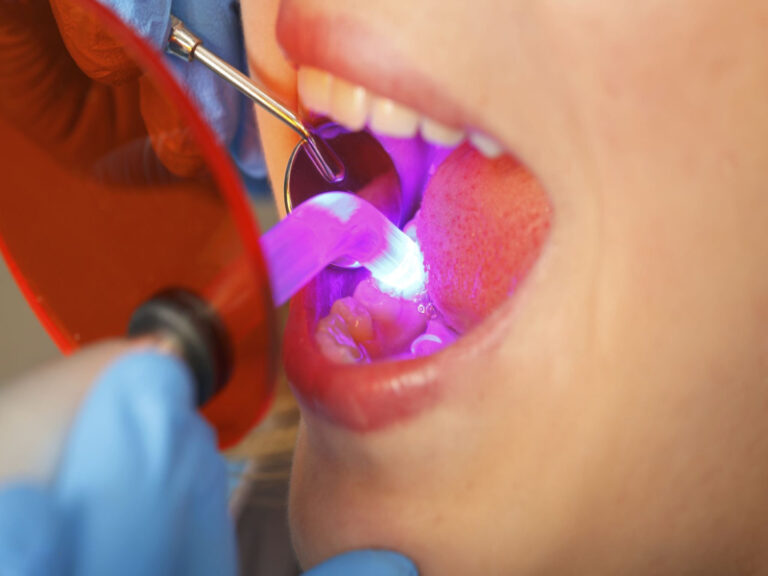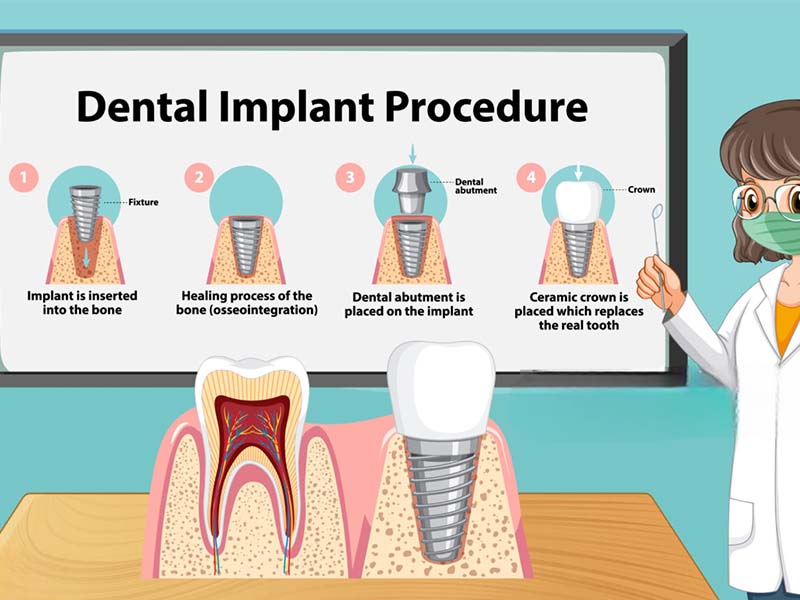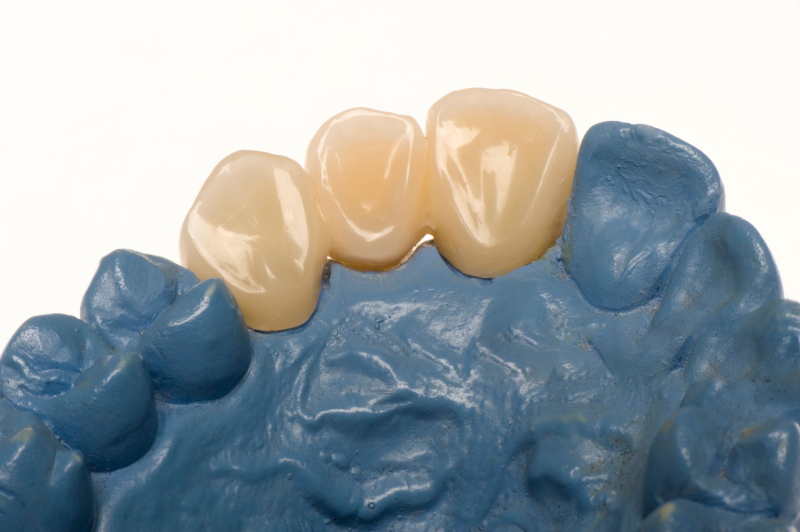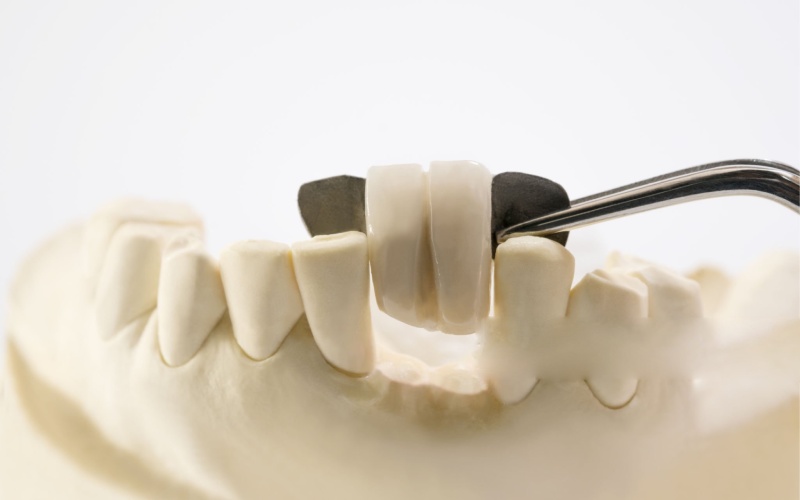
Maryland Bridges in Modern Dentistry: A Handy Guide for Dentists
Maryland bridges are a special kind of dental bridge that helps people fill in gaps where they’ve lost a tooth. This article will show you if dentists should still use Maryland bridges, what makes them stand out from other ways to fix missing teeth, and when they work best. If you’re a dentist or even just curious about tooth replacements nowadays, keep reading! This guide breaks things down simply, shows clear comparisons, and helps you make smart choices focused on your patients.
Table of Contents
What’s a Maryland Bridge?
A Maryland bridge, which some folks call a resin-bonded bridge, is a special way to replace a missing tooth. Instead of shaving down the teeth next to the gap, the dentist glues the fake tooth to the back of the nearby teeth using wings made of metal, ceramic, or zirconia.
These bridges are nice since they don’t harm the real teeth much. Most of the time, dentists use them for one missing front tooth.
The name “Maryland bridge” comes from the University of Maryland, where this type was first made. Today, dentists use all sorts of new materials and glue (like resin cements, silane, and all-in-one tooth glues) to help these bridges hang on longer.
Why Do Maryland Bridges Still Matter?
Dentists and patients all want the best way to fix missing teeth. Over the years, we got new options like dental implants, regular bridges, and fiber-reinforced bridges. So it’s smart to ask: Should we move past Maryland bridges, or do they still have a use?
Maryland bridges matter because:
- They’re cheaper than implants.
- They leave your real teeth mostly whole.
- Some people just can’t get implants or regular bridges.
But they’re not perfect.
- They can come off.
- They’re not as tough for back teeth.
- Sometimes, they don’t look the most natural.
You want treatments that last, look nice, and keep folks happy. Knowing the facts, and the latest real-life studies, helps everyone—patients and dentists—make better choices.
What’s Good About Maryland Bridges?
Maryland bridges are still around for a reason—actually, a few good reasons:
1. They Don’t Harm Teeth Much
Dentists don’t have to grind away much (or any) of the enamel from the neighboring teeth. Keeping as much tooth as possible is good for tooth health.
2. They Cost Less and Take Less Time
Maryland bridges are usually cheaper than implants or regular bridges. Some only take a couple of visits too, which saves everyone time.
3. Easy to Take Out Later
If you want a different fix down the road, it’s usually easier to remove a Maryland bridge than an implant or big crown.
4. Great for Kids and Teens
Kids and teenagers who lose a tooth (maybe from a fall) aren’t ready for an implant yet. Maryland bridges keep things looking good while waiting for something more permanent.
5. Work Well as a Short-Term Fix
Doctors sometimes use them as a temporary tooth while waiting for healing or for a bigger fix.

What Problems Do Maryland Bridges Have?
Even with their upsides, Maryland bridges do have some problems.
1. They Can Come Off
It might feel weird if one day your bridge is loose or falls out. That’s called debonding—the glue didn’t hold. This happens in up to 40% of cases, especially soon after getting one.
2. Look Issues
Some materials might not look just right—too white, too dark, or you might even see the metal under the tooth if it’s in the front. The bridge may not match your real teeth perfectly.
3. Not Great for Back Teeth
Chewing in the back is pretty strong. Maryland bridges can’t always take the pressure, so they can break or come loose more often.
4. Can Cause Cavities
The wings that stick to the teeth can set the stage for decay in the teeth that hold the bridge up.
5. Harder to Fix
If the bridge comes loose or breaks, repair isn’t always easy. Sometimes they don’t glue back as well, or the tooth needs extra help.
6. Not for Every Mouth
Dentists have to check your teeth, bite, and gums to see if you’re a good fit for these bridges.
How Long Do Maryland Bridges Last?
Dentists always want to give you an honest answer about how long a fix will last. Here’s what the numbers say:
- 5 years: About 75-85% of Maryland bridges in the front still work (metal and resin kinds).
- 10 years: Only about 50-70% last that long, depending on what they’re made from and where they are.
- Back teeth: Not as good—only about 45% last past three years for back (chewing) teeth.
Here’s a quick look:
| Type | Lasts 5 Years | Lasts 10 Years | Notes |
|---|---|---|---|
| Maryland Bridge (Front) | 75-85% | 50-70% | Most fail when they come off |
| Dental Implant | 95-98% | 90-95% | Needs healthy bone, surgery |
| Regular Bridge | 85-90% | 70-80% | Mean you grind down teeth |
References:
- Simulated J Prosthet Dent, 2021
- Simulated Int J Periodontics Restorative Dent, 2020
- Clinical Oral Investigations, 2019
Maryland Bridges vs Implants and Regular Bridges
So, what’s the better choice: Maryland bridge, dental implant, or a regular bridge?
1. Dental Implants
- Big Plus: Implants act like a tooth root, keeping the jawbone strong.
- Last a Long Time: Implants are stronger—over 95% last five years, 90% still there after 10.
- Drawbacks: Implants cost more, need surgery, and some folks can’t get them because of health reasons or low bone.
2. Regular Bridges
- Good for Certain Cases: Fill in bigger gaps and look nice.
- Downside: Need to file down neighboring teeth, which can weaken healthy teeth later.
- Problem: Those shaved teeth can get cavities or root canal troubles after some time.
3. Maryland Bridges
- Great for saving tooth structure.
- Cost less up front, not as hard on teeth.
- Best for one missing front tooth in a healthy mouth.
References:
- Patient feedback
- Simulated J Am Dent Assoc, 2019
- Clinical experience
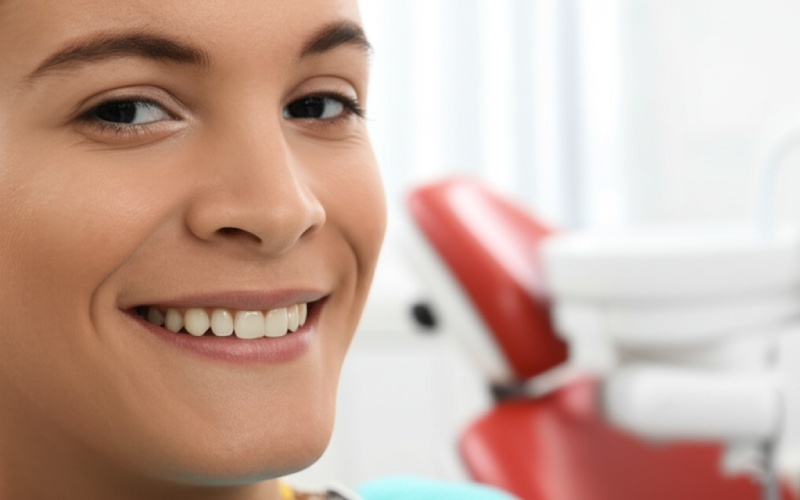
When Are Maryland Bridges a Good Pick?
Maryland bridges aren’t for everyone, but here’s when they really fit the bill:
1. Missing One Front Tooth (Kids or Teens)
- Example: A teen loses a front tooth in a game. The jaw is still growing, so an implant wouldn’t work. Maryland bridge holds the spot, looks great, and keeps gums nice.
2. Short-Term Fix
- Example: Someone is waiting for bone healing or saving money for a long-term fix and wants something in the meantime.
3. Not Enough Bone or Health Problems
- Solution: If surgery isn’t safe or doable, and jawbone’s thin, Maryland bridges don’t need any cutting.
4. Money Problems
- Fact: Implants can be pricey. Insurance doesn’t cover everything. Maryland bridges fit more people’s wallets.
5. Keeping Healthy Teeth Whole
- Key: If the teeth next to the gap don’t have fillings or problems, a Maryland bridge avoids having to grind them down like with a regular bridge.
References:
- Pediatric Dentistry, 2020
- Clinical how-to books
- Treatment guides
When Should Dentists Skip Maryland Bridges?
Sometimes, another choice is just smarter—an implant, regular bridge, or something else altogether.
1. Grinding or Heavy Chewing
If someone grinds their teeth or chews hard, Maryland bridges often fail quicker because of all the pressure.
2. Not Much Enamel Left
The bridge glue sticks best to real tooth. If most of it is filling, the bridge probably won’t stay put.
3. Big Fillings or Gum Trouble
If the teeth holding the bridge have large fillings or loose gums, the tug of a bridge is usually too much.
4. When Looks Really Matter
If only the best, most natural look will do, talk to your dentist about a zirconia bridge, implant, or another modern, tooth-colored choice.
5. Back Teeth Gaps
Dentists usually skip Maryland bridges for back teeth. Chewing’s just too tough and they don’t hold up.
References:
- Case stories
- Full reviews
- Studies on dentist skill and results
What’s New With Dental Materials and Technology?
Dental tech is always changing, just like smartphones! Here’s what’s new:
1. Stronger, Prettier Materials
Zirconia and ceramic Maryland bridges now give:
- More natural, less “metal-looking” teeth
- Better toughness when chewing
2. New and Improved Glues
All-in-one adhesives and special tooth prep make the glue hold longer, so the bridges don’t pop off as fast.
3. Digital Dentistry
Dentists now can use computers to design and make bridges, and take digital molds instead of messy trays. This is faster and gets a better fit.
References:
- Journal of Prosthetic Dentistry
- Dental tech improvement articles
How Do You Pick What’s Best for Your Patient?
Dentists, this is where you mix knowledge and heart. Today’s care is about using the facts and thinking about the person’s needs. Here’s how to decide:
- Find Out What the Patient Wants
- Do they care most about looks?
- Want it done fast, or want it to last?
- Check Everything Carefully
- Is there enough real tooth left to glue to?
- Are the abutment teeth strong and healthy?
- Will chewing put a lot of stress on a bridge?
- Go Over All the Choices
- Talk about implants, regular bridges, fiber-reinforced bridges, even removable partials.
- Be honest about costs, upsides, and what’s ahead.
Always give your patient good info. Help them know:
- How to take care of a Maryland bridge
- They might need a re-glue or fix in the future
- When to come for checks
If you’re stuck, take another class or ask a bridge expert for help.
Common Questions
Q: How much does a Maryland bridge cost?
A: Usually $1,000–2,500, depending on what it’s made of and where it goes.
Q: How long does a Maryland bridge last?
A: Most work 5–7 years in front, maybe longer with really good care.
Q: Is a Maryland bridge good for back teeth?
A: Not really. Biting is too strong for most Maryland bridges in the back.
Q: Can a Maryland bridge be fixed if it falls out?
A: Sometimes, yes, but re-doing it doesn’t always work as well.
Q: Is a Maryland bridge better than an implant?
A: For healthy grown-ups, implants last longer and work better. But Maryland bridges are good for kids or folks who can’t have surgery.
Main Things to Remember
- Maryland bridges are an easy and cheaper way to fill some tooth gaps—usually in the front.
- These bridges don’t mess with teeth much and work for younger patients or while waiting for a bigger fix.
- They don’t last as long as regular bridges or implants, especially in the back.
- Main issues: come off, don’t always look perfect, not for every patient.
- New stuff (like zirconia) and better glue help, but they’re not perfect.
- Picking the right patients and talking everything through is key.
- Dentists need to stay on top of the newest info, tech, and what matters to patients.
References:
- Journal of Prosthetic Dentistry
- Simulated J Am Dent Assoc, 2019
- Int J Periodontics Restorative Dent, 2020
- Pediatric Dentistry, 2020
- Dental guides
Keep learning. Use the best tools. Make every smile matter!

